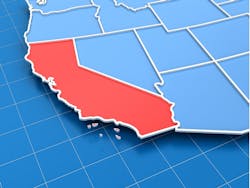The California Public Utilities Commission (CPUC) continued to craft microgrid policy in 2021 with several decisions of significance.
Toward the end of the year, the commission approved San Diego Gas & Electric’s (SDG&E) plan to build four microgrid projects with storage at substations in its service territory (D.21-12-004). The intent of the Dec. 2, 2021, decision is to provide electrical power at chosen sites for resiliency in response to Gov. Gavin Newsom’s July 2021 warning about a potential electricity shortfall.
The action was part of a proceeding launched in September 2019 in response to SB 1339, the state legislature’s mandate that the commission, in consultation with the California Energy Commission and the California Independent System Operator, take specific actions by Dec. 1, 2020, to facilitate the commercialization of microgrids for distribution customers of large electrical corporations.
- First, the CPUC implemented permitting requirements and barrier removal requirements in June 2020 (D.20-16-017).
- Next, the CPUC created an authorization package released in January 2021 in which it adopted microgrid rates, tariffs and rules for large investor-owned electrical corporations and a Microgrid Incentive Program (D.21.01.018).
- In July 2021, the commission suspended the capacity reservation component of standby charges for eligible microgrids (D.21-07-011).
As reported in the latest decision, SDG&E intends to build two of its approved microgrid projects with long duration storage at its Boulevard and Paradise substations. It is still working out specifics on two others.
In a Dec. 22, 2021, email, Anthony Wagner, SDG&E’s spokesman, said the two microgrids, geared toward reliability and resiliency, would serve low-income communities that have already installed renewable energy. The microgrids would provide power for public safety operations, such as fire and police. Planned for a desert region on the Mexican border near the southeastern edge of San Diego County, the Boulevard project already has 600 kW of installed renewables. The microgrid’s energy storage would absorb excess solar and discharge it to the grid when needed. The Paradise microgrid would operate in a similar fashion. To be built on utility property at a substation in Skyline, a hilly area in southeastern San Diego, Paradise would tap into 1,500 kW of renewables installed on the distribution circuit that would feed the microgrid. More details on the projects can be found in Microgrid Knowledge’s Nov. 2, 2021, story.
Wagner said SDG&E is in the process of determining which battery technology for energy storage is best for each prospective site. SDG&E intends to have the microgrids operate in the California Independent System Operator market.
SDG&E to seek bids
SDG&E plans to issue competitive solicitations for the microgrids through an ongoing request for proposals where the utility is seeking resources for 2023-2026.
Also in this decision, the CPUC turned down Los Angeles County’s request for funding to create a regional microgrid agency. The proposed agency would act as a centralized resource to help local governments and public agencies implement microgrids.
Instead, the CPUC suggested the county propose its Emergency Operations Battery Storage Microgrid Project and Pitchess Detention Center Solar and Battery Storage Project for consideration in the separate $200 million Microgrid Incentive Program. A full description of the county’s proposal can be found in Microgrid Knowledge’s Sept. 14, 2021, issue.
Minh Le, general manager of energy and environmental services in Los Angeles County’s Internal Services Department, expressed concerns in a phone conversation on Dec. 23, 2021, about the design of the Microgrid Incentive Program, specifically the economic feasibility for public participation. “How are microgrids to be funded at wholesale rates where there are no clear incentives for public agencies?” she asked.
Le said the county will continue to participate in the program as it is developed by the utilities “to be sure the public agencies have a seat at the table to improve the program.”
Microgrid policy action for 2022
For 2022, the commission plans to take up multiproperty microgrids, the value of resilience and community microgrid incentives, as outlined in a December 2021 memo from Genevieve Shiroma, the lead commissioner on microgrids.
Interested in California microgrids? Watch the discussions from Microgrid California, held Oct. 6, 2021, in Foster City, California, and now available for on demand viewing compliments of Microgrid Knowledge.







